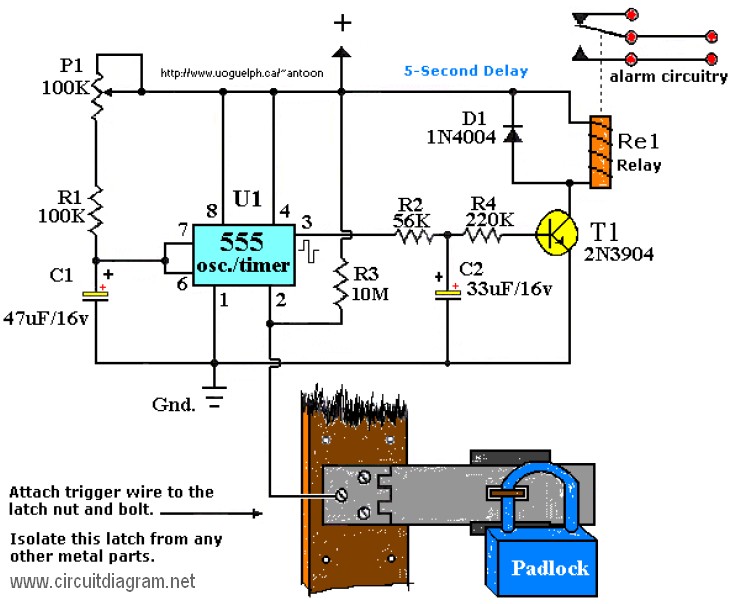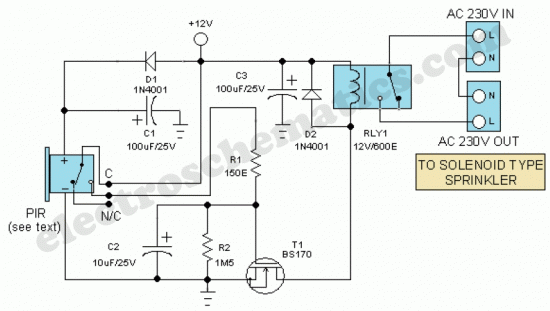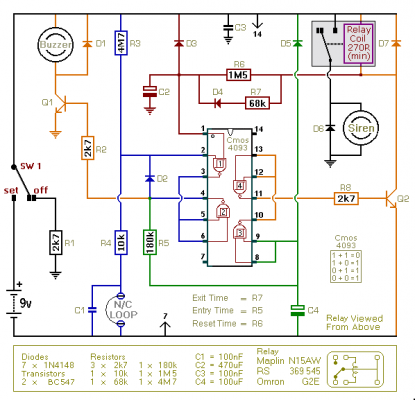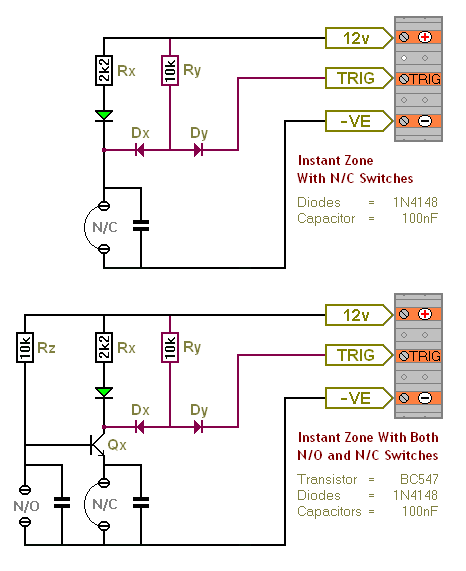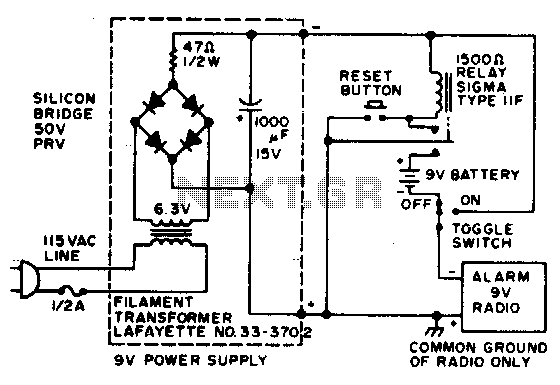
Latching burglar alarm II
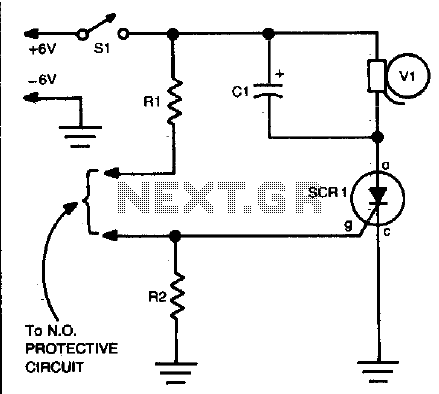
Closing the protective circuit (R1 to R2) applies positive voltage to the gate of SCR1 and activates the alarm. It can only be turned off with SI.
The described circuit utilizes a Silicon Controlled Rectifier (SCR) as a key component for alarm activation. When the protective circuit, represented by resistors R1 and R2, is closed, it allows a positive voltage to be applied to the gate terminal of SCR1. This action triggers the SCR, allowing current to flow through its anode to cathode, thereby energizing the alarm system.
Resistors R1 and R2 are crucial in setting the appropriate gate voltage for SCR1. The values of these resistors can be selected based on the required gate current to ensure reliable triggering of the SCR. The alarm system, which could be a piezo buzzer or an LED indicator, is connected in series with the SCR, ensuring that the alarm is activated only when the SCR is conducting.
The circuit also includes a switch, labeled SI, which serves as the control mechanism for deactivating the alarm. When SI is opened, it interrupts the current flow to the gate of SCR1, allowing the SCR to turn off only when the current through it drops below its holding current. This design ensures that the alarm remains active until SI is manually disengaged, providing a reliable means of alerting users to potential hazards or security breaches.
In summary, the described circuit effectively utilizes an SCR to control an alarm system, with a protective circuit that ensures the SCR is triggered correctly, and a manual switch that allows for deactivation. Proper selection of component values and circuit configuration is essential for optimal performance and reliability.Closing the protective circuit (R1 to R2) applies positive voltage to the gate of SCR1 and sounds the alarm It can only be turned off with SI.
The described circuit utilizes a Silicon Controlled Rectifier (SCR) as a key component for alarm activation. When the protective circuit, represented by resistors R1 and R2, is closed, it allows a positive voltage to be applied to the gate terminal of SCR1. This action triggers the SCR, allowing current to flow through its anode to cathode, thereby energizing the alarm system.
Resistors R1 and R2 are crucial in setting the appropriate gate voltage for SCR1. The values of these resistors can be selected based on the required gate current to ensure reliable triggering of the SCR. The alarm system, which could be a piezo buzzer or an LED indicator, is connected in series with the SCR, ensuring that the alarm is activated only when the SCR is conducting.
The circuit also includes a switch, labeled SI, which serves as the control mechanism for deactivating the alarm. When SI is opened, it interrupts the current flow to the gate of SCR1, allowing the SCR to turn off only when the current through it drops below its holding current. This design ensures that the alarm remains active until SI is manually disengaged, providing a reliable means of alerting users to potential hazards or security breaches.
In summary, the described circuit effectively utilizes an SCR to control an alarm system, with a protective circuit that ensures the SCR is triggered correctly, and a manual switch that allows for deactivation. Proper selection of component values and circuit configuration is essential for optimal performance and reliability.Closing the protective circuit (R1 to R2) applies positive voltage to the gate of SCR1 and sounds the alarm It can only be turned off with SI.
